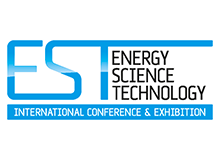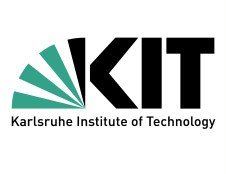Renewable Energy
Renewable energy sources will play a major role in prospective sustainable energy systems. Therefore cost-effective and highly efficient technologies for centralised and decentralised applications are essential to fully exploit the vast potential of solar radiation, wind, biomass, geothermal energy and water power.
Advanced materials and improved processes will further enhance the efficiency of renewable energy systems and by that financial and energy payback times will decrease. But still, even if there seems to be no limitation of availability (e.g. solar radiation and wind), there are other limitations due to space, competition with food agriculture, environment protection and social acceptance.
The EST 2015 will discuss the latest research concerning the conversion of renewable energy sources into usable energy or media (gas, fuels). It will show innovative materials and concepts for energy systems and present lighthouse projects, which may shape the future. Scientists from different disciplines, engineers, operators and other stakeholders will discuss, how and to what extent renewables can take over the function of fossil resources.
Nevertheless the use of renewable energy sources can’t be considered isolated from efficiency aspects and due to their availability and fluctuation they will need grids and storages .
Photovoltaics
This EST 2015 topic includes inorganic and organic photovoltaics, concentrating PV, innovative inverter solutions, new fabrication technologies like the printing of PV cells as well as interesting and innovative demonstration projects.
Current materials used for the production of semiconductors are monocrystalline silicon, polycrystalline silicon, amorphous silicon, cadmium telluride (CdTe) and copper indium gallium selenide(CIGS)/sulphide. Research tries to optimize their application or replace them by other materials, in order to make cell-production cheaper and less resource-consuming. Current key words in the field of PV are power optimizers, smart modules and MPPT (maximum power point tracking)..
Solar thermal technology
We would like to present the wide range of possible solar thermal solutions: new construction types of collectors, new materials (nano-scale, plastics, etc.), large-scale applications, district-heating solutions and solar thermal power plants. The EST 2015 is also interested in special types of thermal collectors like concentrating systems (e.g. for process or industrial heat), PVT collectors, air collectors or solar updraft towers. We are pleased to present your contributions from research, science, technical development, niche and broad market applications.
Chemical and solar fuels
Chemical fuels are divided into primary (natural) and secondary (artificial) types, whereas every type can occur in solid, liquid and gaseous form. Natural fuels can be fossil (coal, petroleum and natural gas) and renewable (wood, peat, dung etc.). Secondary fuels used to be mainly of fossil origin (e.g. diesel, gasoline, kerosene, ethanol, hydrogen, CNG), but due to the limited availability of fossil resources and climate protection research in finding new processes for generating chemical fuels from renewable sources has been enforced.
Among them those are named solar fuels, which are generated by sunlight through artificial photosynthesis or thermochemical reaction.
The EST 2015 invites all stakeholders to present their current work in the field of generation or transformation of fuels, driven by or related to renewable energies.
Biomass and biomass conversion technologies
Biomass can be turned by thermal, chemical or biochemical conversion into solid, liquid or gaseous products, which offer much more possibilities than just burning biomass for the generation of heat. Input materials are for example wood, straw, miscanthus, switchgrass, hemp, corn, poplar, willow, sorghum, bamboo or sugarcane.
EST 2015 is interested in the newest developments in the field of biomass conversion. Which biomass can be used? What are the potentials, barriers and solutions in the production of biogas, syngas (pyrolysis), ethanol, biodiesel and other media? What can research contribute and what is revealed by prototypes and demonstration projects?
Geothermal energy systems
Geothermal energy systems are used for heating, cooling and correspondingly storage appliances as well as for power generation. Depending on the depth and geological situation geothermal systems feature a large range of temperatures. Whereas near surface geothermal systems often use heat pumps to bring the temperature to a usable level, deep geothermal energy (DGE) systems provide temperatures directly usable for heating and even electricity production. Deep geothermal systems are called Hot-Dry-Rock (HDR), Deep-Heat-Mining (DHM) or Enhanced-Geothermal-Systems (EGS).
EST 2015 is looking at the latest findings in material and system research concerning geological exploration, energy extraction and concepts for application. Scientists, engineers and other stakeholders will discuss current technologies and future potentials without excluding possible risks (earthquakes, subsidence, ground-water pollution).
Utilisation of low-level waste energy
Formerly unused and wasted materials or energy flows are converted to usable energy by so-called Waste-to-Energy (WtE) or Energy-from-Waste concepts. This kind of energy can be called renewable energy and offers a large potential to make existing processes more efficient and reduce greenhouse gas emissions. Examples are heat pumps, which use the heat of wastewater to condition buildings, and district heating grids, which integrate surplus heat from industrial processes. EST 2015 would like to present the latest developments and show promising concepts in this field.
Wind energy
As some countries already prove, wind energy can take over an important share of electricity production. Of course there are challenges to face like the fluctuation, the transport from production site to possibly far away consumers, the land-use and social resistance to wind power projects. We are interested in what research and engineering can contribute to overcome those challenges and to make wind power a large pillar of the future energy system. EST 2015 wants to present current materials research in concerns to rotors, generators and pile construction, innovative wind power solutions, small-scale or urban wind turbines, onshore and offshore projects, horizontal (HWAT) and vertical axis turbines (VWAT).
Water (Hydro, Wave, Tidal, Osmosis, ...)
Water can be regarded as a renewable energy resource in different ways. Traditionally the natural water cycle and therefore the potential energy is utilised by driving water wheels to produce mechanical power or turbines to produce electricity. Today also existing pressure differences in freshwater networks are used for generating electricity. Wave power plants and tidal power plants use the natural movement of the medium in the sea, osmosis power plants use the physical difference of seawater and freshwater. In the field of heating and cooling a relevant volume of water can be used as a heat sink or a heat resource (often in combination with a heat pump).
We are looking forward to your applications of water, to your latest research in waterpower and to your innovative solutions in using this medium for the generation of useful energy.
Availability and exploitation of renewable energy sources
The future energy system will use a broad mix of energy sources. The availability of renewable energy sources differs locally and influences a possible ecological and economic implementation of the corresponding energy production technology. The exploitation is often linked to land-use (e.g. land for cultivating biomass, photovoltaic plants or wind parks) and is therefore competing with other needs (e.g. food agriculture, conservation areas, urban settlements). Research is examining the individual potentials of renewable energy sources (RES), their limitations and their possible contributions to a sustainable energy supply.
Other renewable energy
The EST 2015 is also interested in other research, science or technology concerning renewable energy sources, even if it doesn’t fit the categories above. We are keen in seeing what other ideas there are out in the world!









